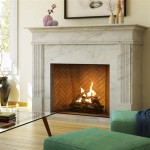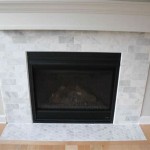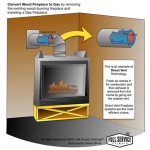Exploring Fireplace Options in Orange County: A Comprehensive Guide
Orange County, California, experiences a unique blend of coastal warmth and occasional cool evenings, particularly during the fall and winter months. This climatic variability makes a fireplace a desirable addition to many homes. The fireplace market in Orange County offers a diverse range of options, catering to various aesthetic preferences, fuel choices, and functional needs. Understanding these options is crucial for homeowners seeking to enhance their living spaces with the warmth and ambiance of a fireplace.
The selection process involves considering several key factors, including the type of fireplace, the fuel source, installation considerations, and compliance with local building codes. Furthermore, ongoing maintenance and safety protocols are essential to ensure efficient and safe operation. This article provides a comprehensive guide to navigating the fireplace landscape in Orange County.
Types of Fireplaces Available in Orange County
The fireplace market in Orange County offers several distinct types, each with its own set of characteristics, advantages, and disadvantages. Understanding these differences is the first step in selecting the appropriate fireplace for a home.
Wood-burning Fireplaces: These represent the traditional fireplace, characterized by the combustion of wood logs within a masonry or metal firebox. Wood-burning fireplaces offer a classic aesthetic and the distinct aroma of burning wood. However, they also require a significant amount of maintenance, including chimney cleaning and ash removal. Furthermore, wood-burning fireplaces are subject to stringent emission regulations in many areas of Orange County, necessitating the installation of EPA-certified models.
Gas Fireplaces: Gas fireplaces utilize natural gas or propane as a fuel source. They offer a convenient and efficient alternative to wood-burning fireplaces. Gas fireplaces are typically easier to operate, requiring only the flip of a switch or the press of a button to ignite. They also produce fewer emissions than wood-burning fireplaces and require less maintenance. Gas fireplaces are available in a variety of styles, including traditional log sets, contemporary linear designs, and vent-free models. Vent-free models, however, require careful consideration regarding ventilation and indoor air quality.
Electric Fireplaces: Electric fireplaces offer the simplest installation and operation. They do not require a chimney or venting system, making them suitable for apartments, condos, and other spaces where traditional fireplaces are not feasible. Electric fireplaces use electric heating elements to generate warmth and often incorporate realistic flame effects to simulate the appearance of a real fire. They are a cost-effective option for supplemental heating and aesthetic enhancement, but they may not provide the same level of heat output as wood-burning or gas fireplaces.
Ethanol Fireplaces: Ethanol fireplaces burn liquid ethanol fuel, producing a clean-burning flame without the need for a chimney or venting system. They are a relatively new option in the fireplace market and are often chosen for their modern aesthetic and ease of installation. Ethanol fireplaces are typically smaller and more portable than other types of fireplaces, making them suitable for both indoor and outdoor use. However, the cost of ethanol fuel can be higher than other fuel sources, and the heat output may be limited.
Fuel Source Considerations and Efficiency
The choice of fuel source is a critical decision that impacts the operational cost, environmental impact, and overall convenience of a fireplace. Each fuel source has its own set of advantages and disadvantages.
Wood: Wood is a renewable resource, but its combustion can produce significant air pollution, including particulate matter and greenhouse gases. The efficiency of wood-burning fireplaces varies depending on the design and installation. Open-hearth fireplaces are generally less efficient than EPA-certified wood stoves and fireplace inserts. The cost of wood can also vary depending on the availability and the type of wood.
Natural Gas: Natural gas is a readily available and relatively clean-burning fuel source. Gas fireplaces are typically more efficient than wood-burning fireplaces, with efficiencies ranging from 70% to 90%. The cost of natural gas varies depending on market conditions and local utility rates. Natural gas fireplaces require a connection to a gas line, which may necessitate professional installation.
Propane: Propane is a portable fuel source that is often used in areas where natural gas is not available. Propane fireplaces offer similar efficiency and convenience to natural gas fireplaces. However, propane tanks require regular refilling, and the cost of propane can be higher than natural gas. Propane fireplaces also require a connection to a propane tank and regulator, which may necessitate professional installation.
Electricity: Electricity is a clean and convenient energy source, but electric fireplaces are typically less efficient than gas or wood-burning fireplaces in terms of heat output per unit of energy consumed. The cost of electricity varies depending on market conditions and local utility rates. Electric fireplaces require a standard electrical outlet and do not require any venting or fuel storage.
Ethanol: Ethanol is a renewable fuel source derived from plant-based materials. Ethanol fireplaces produce a clean-burning flame with minimal emissions. However, the cost of ethanol fuel can be higher than other fuel sources, and the heat output may be limited. Ethanol fireplaces require the purchase and storage of liquid ethanol fuel.
Installation and Safety Regulations in Orange County
The installation of a fireplace in Orange County is subject to local building codes and safety regulations. These regulations are designed to ensure the safe and efficient operation of fireplaces and to minimize the risk of fire or carbon monoxide poisoning. It is essential to obtain the necessary permits and to hire a qualified contractor to install the fireplace.
Building Codes: Orange County's building codes address various aspects of fireplace installation, including the size and construction of the firebox, the chimney design, the ventilation requirements, and the clearance to combustible materials. These codes are based on the California Building Code and may be further supplemented by local ordinances. Obtaining the necessary permits ensures that the installation complies with these codes and that the fireplace is safe to operate.
Venting Requirements: The venting requirements for fireplaces vary depending on the type of fireplace and the fuel source. Wood-burning fireplaces require a chimney that extends above the roofline to properly exhaust smoke and combustion gases. Gas fireplaces may require a direct-vent system or a B-vent system, depending on the model and local codes. Electric fireplaces do not require any venting. It is crucial to ensure that the venting system is properly sized and installed to prevent backdrafting and carbon monoxide poisoning.
Clearance to Combustible Materials: Fireplaces generate significant heat, and it is essential to maintain adequate clearance to combustible materials, such as wood framing, drywall, and furniture. Building codes specify minimum clearance distances for different types of fireplaces and venting systems. Failure to maintain adequate clearance can increase the risk of fire. Heat shields and other protective measures may be required to reduce the risk of fire.
Carbon Monoxide Detectors: Carbon monoxide (CO) is a colorless and odorless gas that can be produced by incomplete combustion in fireplaces. CO poisoning can be fatal. Building codes require the installation of carbon monoxide detectors in all homes with fireplaces. These detectors should be located near sleeping areas and tested regularly to ensure proper operation. It is also important to have the fireplace and venting system inspected annually by a qualified professional to detect any potential CO leaks.
Professional Installation: The installation of a fireplace is a complex and potentially dangerous task that should be performed by a qualified contractor. A professional installer will have the knowledge and experience to ensure that the fireplace is properly installed and that it complies with all applicable building codes and safety regulations. They can also advise on the best type of fireplace and fuel source for a home and provide guidance on ongoing maintenance and safety protocols. Choosing a licensed and insured contractor is crucial to protect homeowners from liability in case of accidents or damages.
Maintenance and Safety: Regular maintenance is essential to ensure the safe and efficient operation of a fireplace. Wood-burning fireplaces require regular chimney cleaning to remove creosote buildup, which can pose a fire hazard. Gas fireplaces require periodic inspection and cleaning of the burner assembly and venting system. Electric fireplaces require minimal maintenance, but it is important to keep the heating elements clean and free of dust. Adhering to manufacturer recommendations for maintenance schedules will allow the homeowner to safely and effectively use their new fireplace for years to come.
Choosing the right fireplace for a home in Orange County involves careful consideration of various factors, including the type of fireplace, the fuel source, installation considerations, and compliance with local building codes. By understanding these factors and seeking professional guidance, homeowners can enhance their living spaces with the warmth and ambiance of a fireplace while ensuring safety and efficiency.

Astria Fireplaces Oc Bbq Fireplace Irvine

Astria Fireplaces Oc Bbq Fireplace Irvine

Orange County Bbq Fireplace 38 Photos 75 Reviews 2 Mclaren Dr Irvine Services Phone Number Yelp

Embers West Custom Fireplace Design Service And More In Orange County

Oc Bbqs Fireplaces

Direct Vent Gas Fireplaces Fireplace Design Installation In Orange County

Afd S On At Oc Backyard Irvine

Orange County Outdoor Fireplaces

Outdoor Furniture Patio Bbqs Fire Pits Orange County Ca Fireplace Trends

Orange County Outdoor Fireplace Landscape Contractor Company Tru Services








